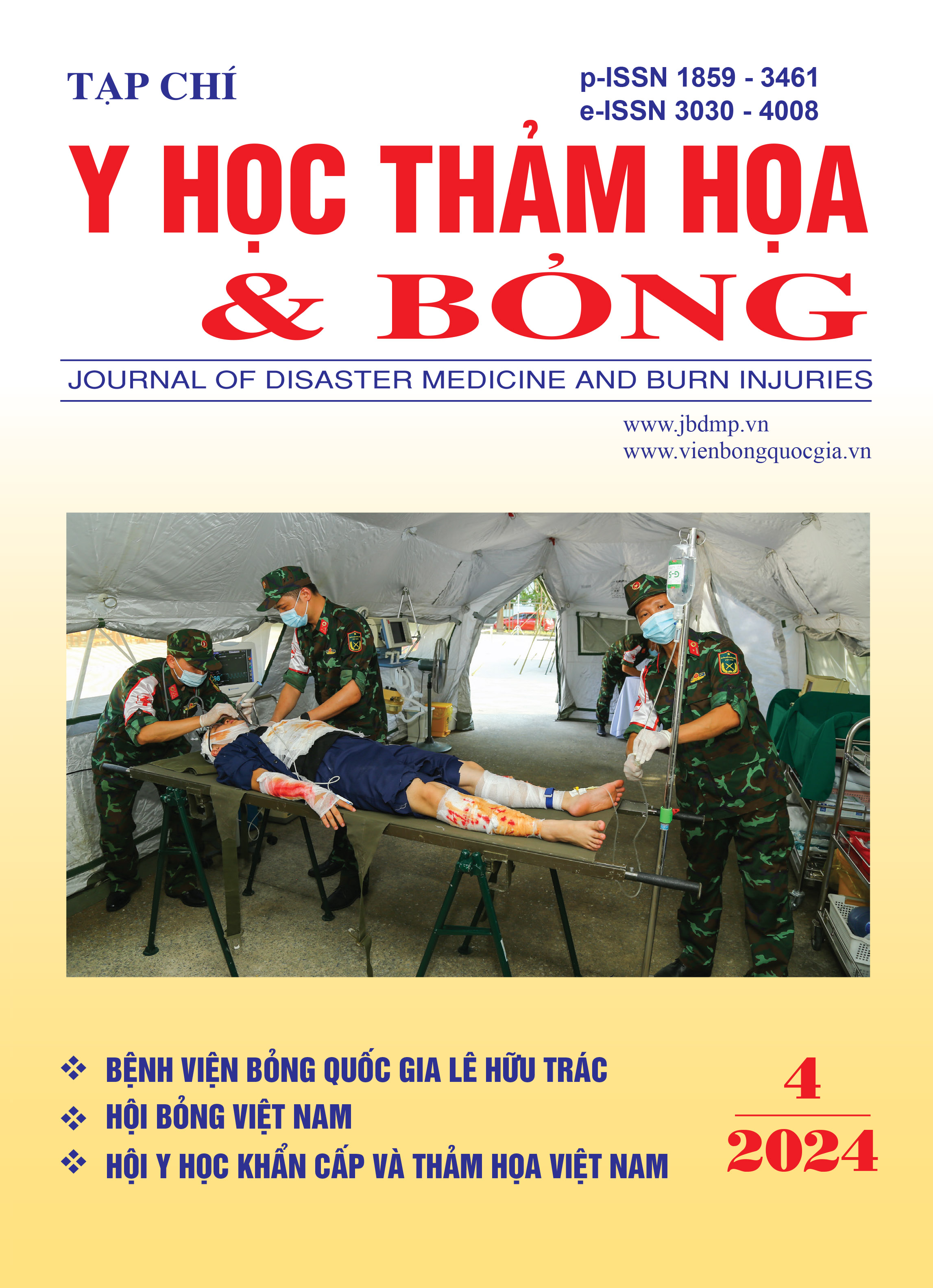Knowledge, attitude and practice on prevention of ulcer foot complication among diabetic patients at the 108 Military Central Hospital
Main Article Content
Abstract
Objectives: Assess knowledge, attitude and practice on prevention of ulcer foot complications among diabetic patients at 108 Military Central Hospital.
Subject and Methods: The cross-sectional study was conducted with 115 diabetic patients in 108 Military Central Hospitals from January 2023 to May 2023.
Results: The mean age was 58.0 ± 13.3 years old. Knowledge classification: Good was 34.7%, average was 27.8%, poor was 34.8%. Attitude classification: positive was 39.1%, negative was 60.9%. Classification of practice: Good was 44.3%, average was 24.3%, poor was 31.4%. The group < 50 years old had a higher average knowledge and practice score than the group ≥ 50 years old (p < 0.05). The group living in urban areas and the group with intermediate/university/post-graduated levels had higher knowledge scores than the group living in rural areas and with high school (p < 0.05). There is a positive correlation between knowledge and practice (r = 0.759; p = 0.002).
Conclusion: People with diabetes have limited knowledge, attitudes, and practices about ulcer foot complication prevention. Therefore, it is necessary to raise awareness and promote health education for patients to see the importance and dangers of foot ulcers, minimize the need for amputation, and reduce mortality rates.
Article Details
Keywords
Knowledge, attitude, practice, ulcer foot complication
References
2. Alkalash SH, Alnashri FH, Alnashri AI et al (2024). Knowledge, Attitude, and Practice of Adult Diabetics Regarding Diabetic Foot Ulcers: A Cross-Sectional Study in Saudi Arabia. Cureus; 16(1):e53356.
3. Amri AM, Shahrani IM, Almaker YA et al (2021). Knowledge, Attitude and Practice Regarding Risk of Diabetic Foot Among Diabetic Patients in Aseer Region, Saudi Arabia. Cureus; 13(10):e18791.
4. Armstrong DG., Boulton AM., Bus SA (2017). Diabetic foot ulcers and their recurrence. N Engl J Med;376:2367-2375.
5. Carmona GA, Hoffmeyer P, Herrmann FR et al (2005). Major lower limb amputations in the elderly observed over ten years: The role of diabetes and peripheral arterial disease. Diabetes Metab;31:449-554.
6. Fatma ME & Mohamed GE (2024). Self-Care Knowledge, Attitude, and Practice among Diabetic Foot Patients: A Cross-Sectional Research. Zagazig Nursing Journal; 20(1): 168-183.
7. Galkowska H, Wojewodzka U, Olszewski WL (2006). Chemokines, Cytokines, and Growth Factors in Keratinocytes and Dermal Endothelial Cells in the Margin of Chronic Diabetic Foot Ulcers. Wound Repair Regen;14:558–565.
8. Mahmoodi H, Abdi K, Navarro-Flores E et al (2021). Psychometric evaluation of the Persian version of the diabetic foot self-care questionnaire in Iranian patients with diabetes. BMC Endocr Disord; 21(1):72.
9. Toscano CM, Sugita TH, Rosa MQ et al (2018). Annual direct medical costs of diabetic foot disease in Brazil: a cost of illness study. Int J Environ Res Public Health; 15(1):89.
10. Untari EK, Andayani TM, Yasin NM et al (2024). A Review of Patient's Knowledge and Practice of Diabetic Foot Self-Care. Malays J Med Sci;31(1):33-50.


